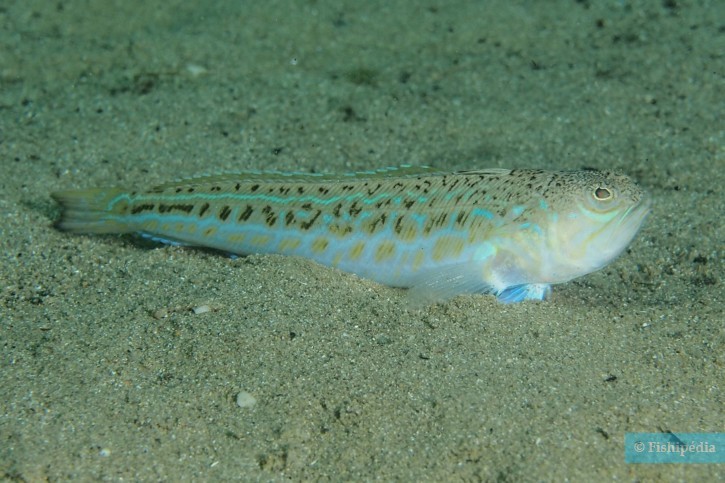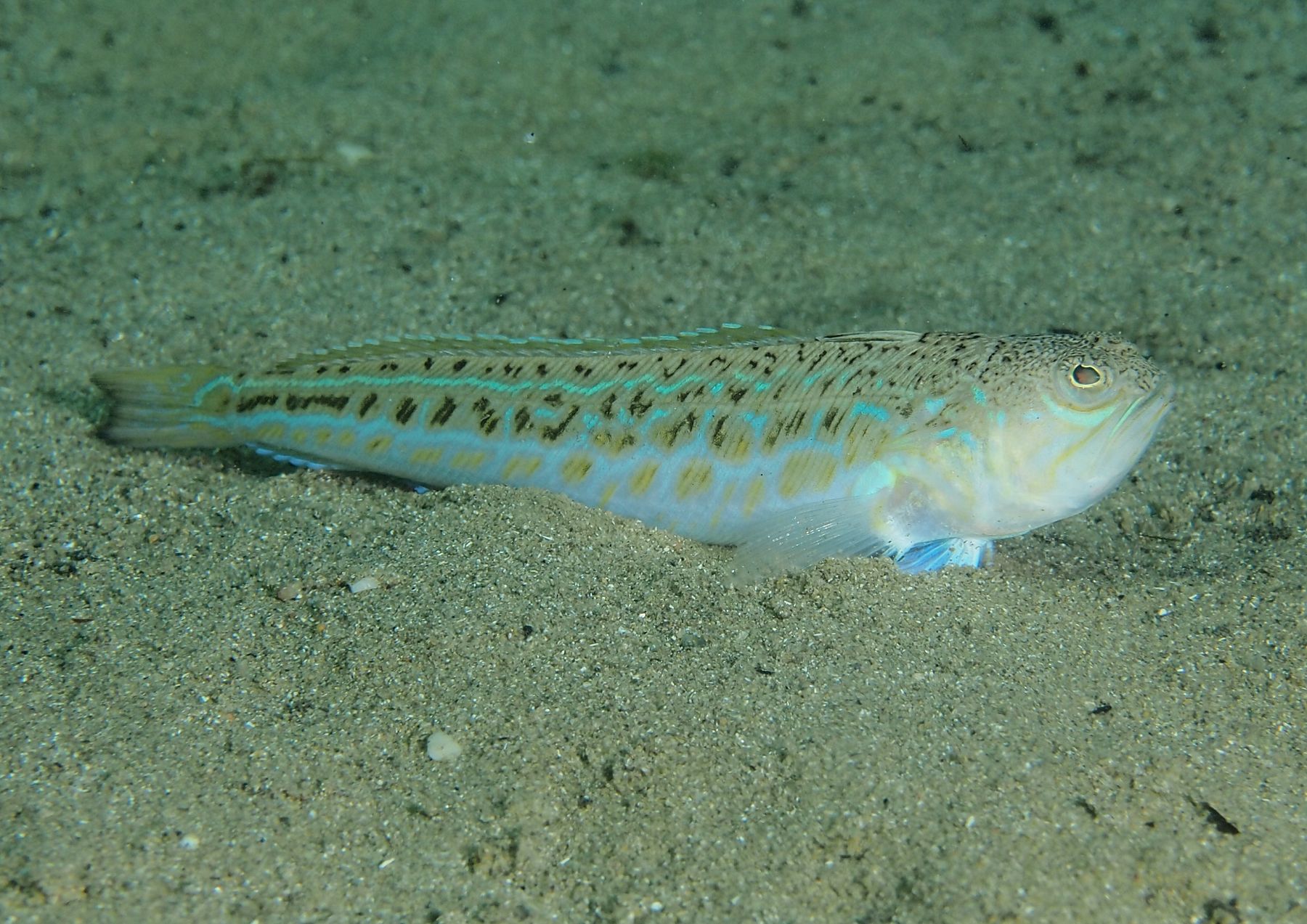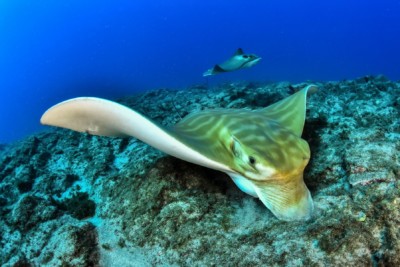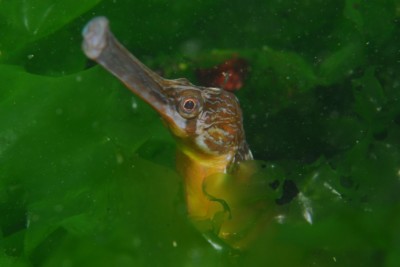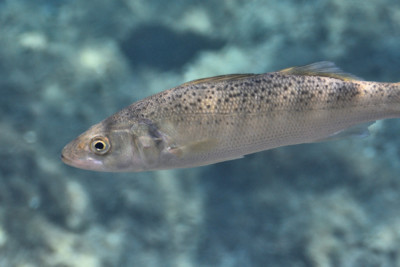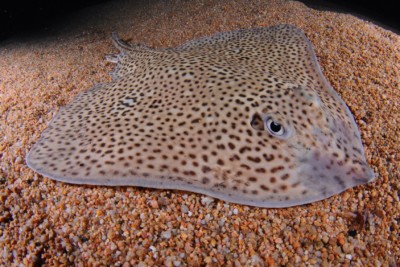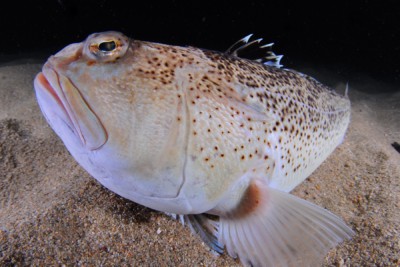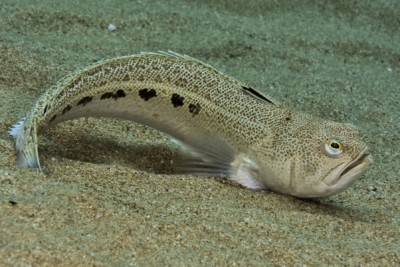Introduction
The greater weever is a venomous marine fish found near the coasts of the Eastern Atlantic Ocean, the Mediterranean Sea, and the Black Sea. It is one of the most common and studied weever species in the region.
It is found from Norway to Morocco, Madeira, and the Canary Islands.
When in danger, it does not hesitate to deliver a venomous sting using its lateral spines. The pain is intense and without treatment of the affected area, the risks of complications are significant.
Who is it?
Morphology
-
Average size25 cm
-
Maximum size40 cm
-
Longevity16 year
-
Mimicrysand
-
Patternmottling
-
Average size25 cm
-
Maximum size40 cm
-
Longevity16 year
-
Mimicrysand
-
Patternmottling
How to recognize This fish ?
The body is elongated, more than 6 times the height. It is mostly beige, with small dark spots or marbling. Yellowish to turquoise diagonal stripes characterize this species.
The head resembles that of toads, with a wide and flattened mouth. Two to three small spines are present in front of each eye. Like other weever species, this one has venomous spines on the first dorsal fin and a spine at each operculum.
Adults rarely exceed 40 cm in length, but some individuals have been recorded at over 50 cm.
Sexual dimorphism
There are few distinguishing features between males and females.
Behaviour & Life cycle
-
dietcarnivorous
-
Sociabilitysolitary
-
territorialYes
-
Way of livingdiurnal
During the day, this solitary species resides semi-buried on the seabed. Only the head and dorsal spine protrude from the sand. At night, the greater weever goes hunting and stops camouflaging itself.
It feeds on small invertebrates and fish.
Reproduction
-
Reproductionovipare qui pond en eau libre
The greater weever is an oviparous fish that spawns in open water. In several Mediterranean regions, reproduction takes place between June and August. The eggs measure 1mm and are pelagic. Sexual maturity is reached after one year, at a size between 12 and 16 cm according to studies. Publications are still scarce to validate these latest findings.
Weevers migrate to shallow waters to reproduce. It is during this period that the risks of stings are highest.
Risks for humans
-
VenomousYes
This species is very venomous and can cause serious accidents upon contact.
What to do in the event of a sting?
in case of sting, the following rules should be followed, in this order:
- Isolate the victim from the danger and quickly remove him or her from the water
- Call for help
- Lay the victim down in a half-sitting position and avoid any effort
- Immobilize the affected limb
- Clean the wound
- The venom of this species being thermolabile, it can be neutralized if it is submitted to a temperature of about 45 °C. It is therefore possible to heat the wound. This popular technique should be practiced with great care so as not to aggravate the wound by burning it. It is advisable to immerse the affected limb in hot water.
- If the puncture is too deep, heating the wound will be less effective.
Sometimes the sting can cause discomfort or even loss of consciousness in the victim. The stings are usually very painful.
Origin and distribution
What is its habitat?
Natural environment characteristics
-
Depth1 - 30 m
Biotope presentation
The greater weever is most commonly found at depths of less than 30 m. However, it is not impossible to see this fish at other depths.
It prefers sandy and muddy bottoms, and is rare in rocky areas and seagrass beds.
Species of the same biotope
To go further
Sources & Contributions
Participation & Validation
The Fishipedia team and specialist contributors are committed to providing high-quality content. However, although the information comes from scientific sources or testimonials from specialists, the cards may contain inaccuracies.

Benoit Chartrer

Julie Magnus
Translation
Translation done with the valuable contribution of our translators, who make this information available to a wider audience. We sincerely thank them for their commitment.
Bibliographic references
- - GBIF
- - Age and growth of the greater weever, Trachinus draco (Linnaeus, 1758) inhabiting Iskenderun Bay, North-eastern Mediterranean Sea - Kagan BUZ - Nuri BAŞUSTA - - 2015.
- - Growth and reproduction of the greater weever (Trachinus draco L., 1758) along the eastern coast of the Black Sea - Orhan Ak - Yasar Genç - J. Black Sea/Mediterranean Environment - 2013.
Scientific partners
Tags
Same genus
Species of the same biotope
